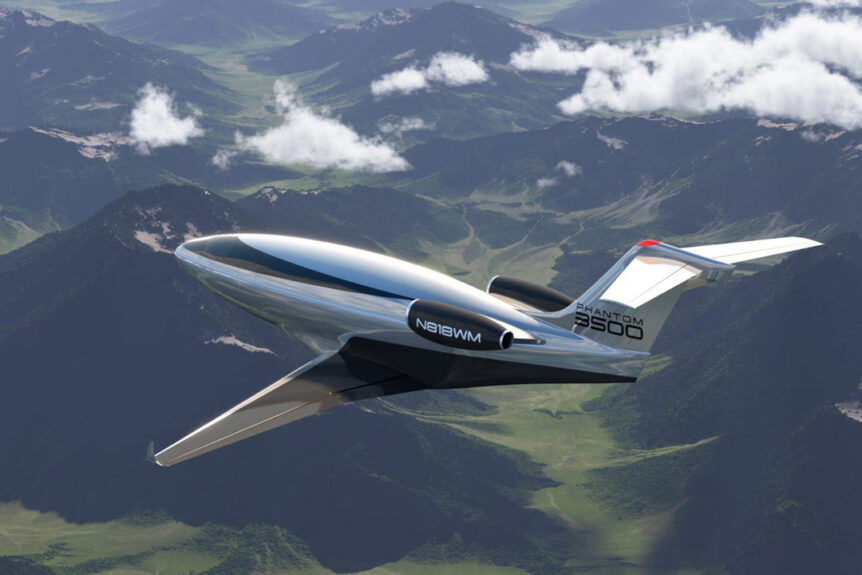Windowless cabin private jets replace traditional portholes with high definition display surfaces tied to exterior cameras, unlocking aerodynamic gains, structural efficiency, design freedom and enhanced privacy for owners and fractional operators.
Why windowless cabin private jets are a real engineering play
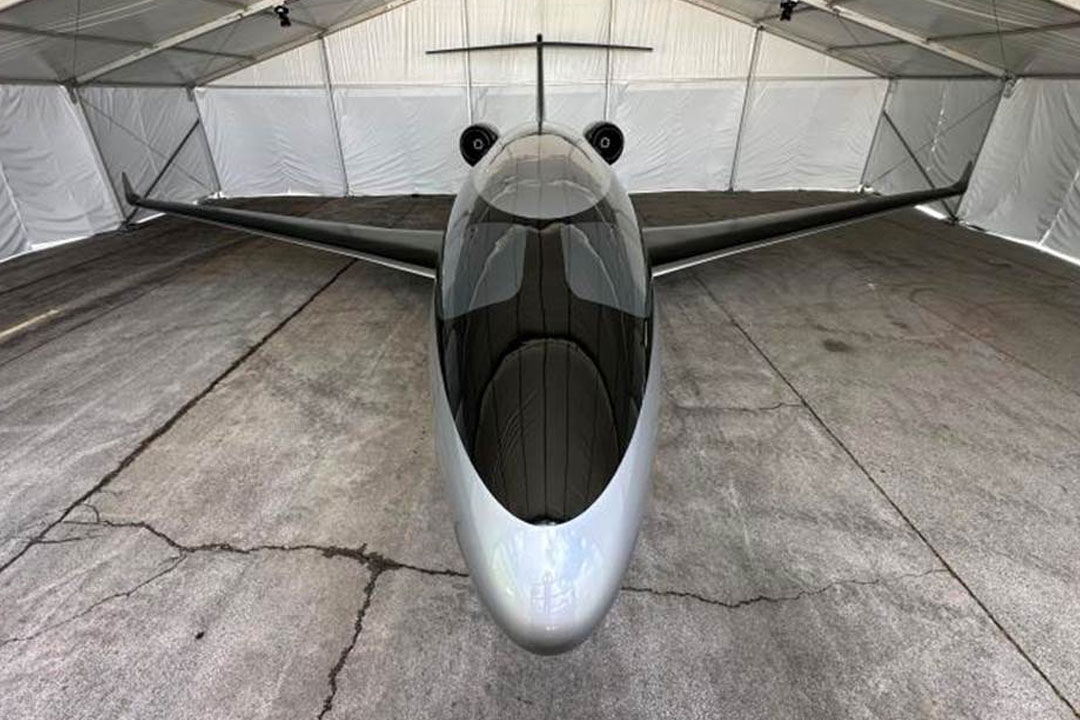
Otto Aerospace’s new business jet has no traditional passenger windows and a tear-drop-shaped cabin. | Photo: ottoaerospace.com
Removing dozens of small fuselage cutouts reduces drag and simplifies structure. Each window normally demands reinforcement that disturbs the outer mold line and adds weight. A smooth skin improves the chance of maintaining laminar flow, which is why clean sheet concepts link the windowless idea to efficiency targets and extended range. Otto Aerospace’s laminar flow airframe highlights how a seamless fuselage is central to the performance brief for its Phantom 3500 program.
Beyond drag, fewer cutouts mean fewer stress concentrations and a lighter shell for the same stiffness. That weight budget can be reallocated to fuel, payload or cabin features. The structural simplification also gives cabin designers more freedom to place monuments, art walls and large format screens where passengers actually sit rather than where windows happen to be.
The privacy and experience angle
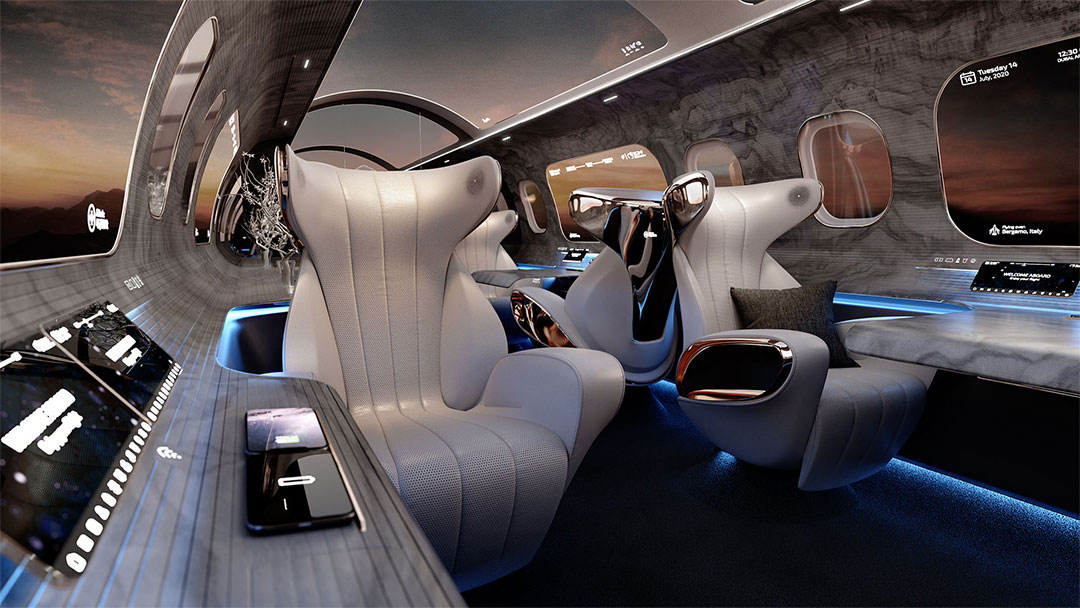
Rosen’s original vision for the cabin of the future | rosenaviation.com
Privacy is a practical driver in business aviation. Eliminating windows makes it difficult for ground observers to see into the cabin, while passengers still enjoy expansive vistas via stitched camera feeds on wall length displays.
Concepts like Rosen Aviation’s Maverick Project show how OLED surfaces, dynamic lighting and interactive content can turn sidewalls and bulkheads into immersive layers that double as productivity or wellness tools.
Programs and concepts to watch
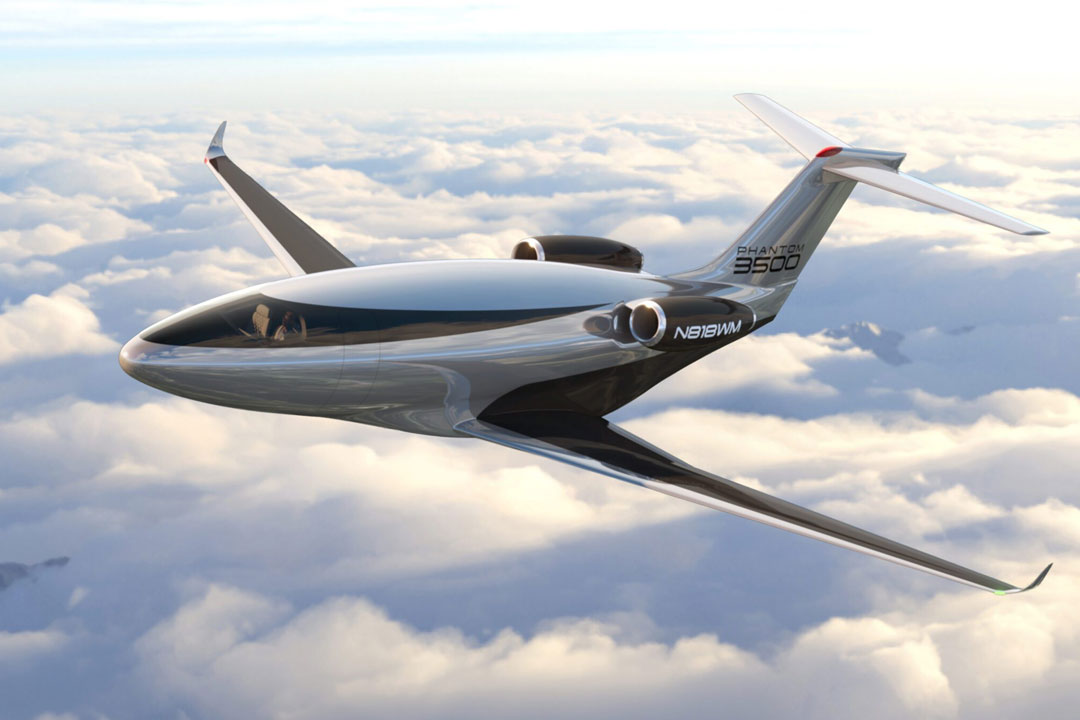
Otto Aerospace Phantom 3500 | Photo: ottoaerospace.com
Otto’s Phantom 3500 is a nine seat, super midsize concept featuring a teardrop fuselage with no passenger windows and a digital cabin that pipes live external views to large displays. Multiple reports outline an aggressive performance and cost story tied to laminar flow and the smooth fuselage. Industry press has recently covered the development push and market positioning for the airframe.
Spike Aerospace S 512
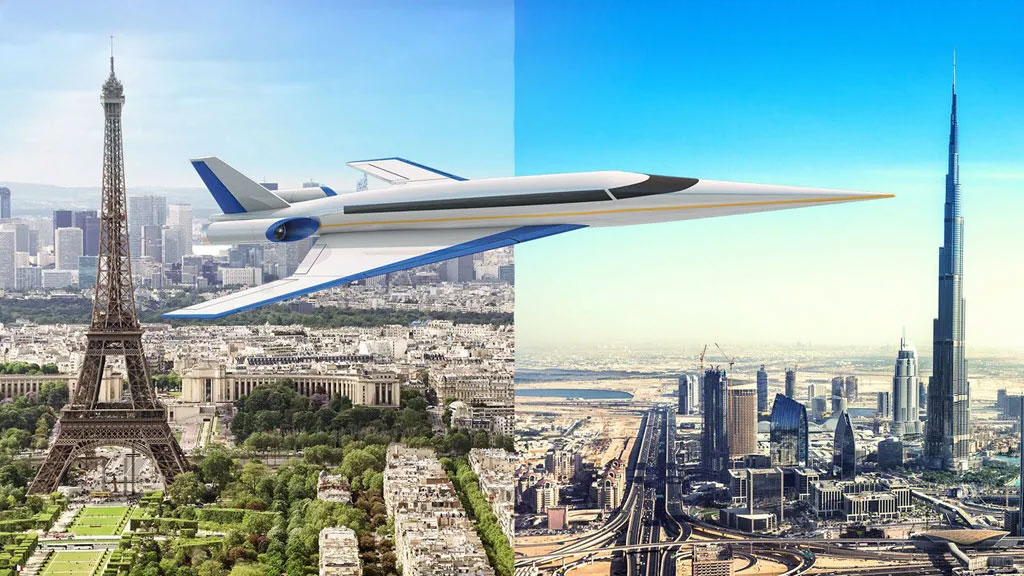
Spike Aerospace S 512 | Photo: spikeaerospace.com
Spike’s S 512 supersonic business jet concept has showcased a multiplex digital cabin using exterior cameras and full length displays rather than conventional windows. The company positions the approach as a structural and experiential win that suits high speed flight, where eliminating window cutouts supports a smoother, stronger shell. Earlier features chronicled the concept’s display first interior and the idea that passengers would adapt quickly to cinematic panoramic views in lieu of physical windows.
IXION and other design studies
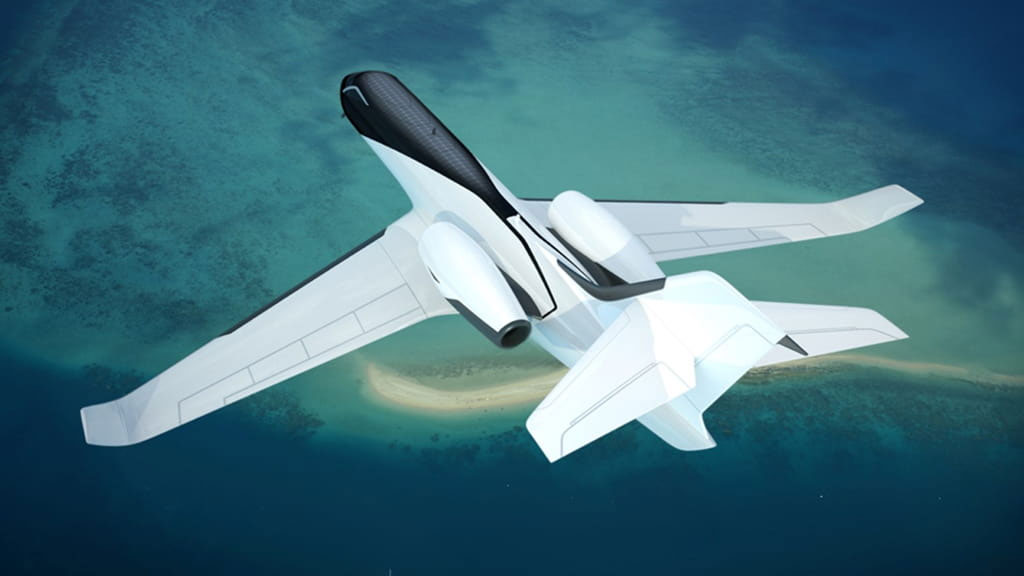
IXION concept from Technicon Design | Photo: technicondesign.com
The IXION concept from Technicon Design popularized the idea of replacing windows with wraparound displays showing real time exterior imagery and ambient content on walls and ceilings. The vision even explored energy harvesting for onboard systems while demonstrating how panoramic media could transform perceived cabin volume.
What the digital window changes inside the cabin
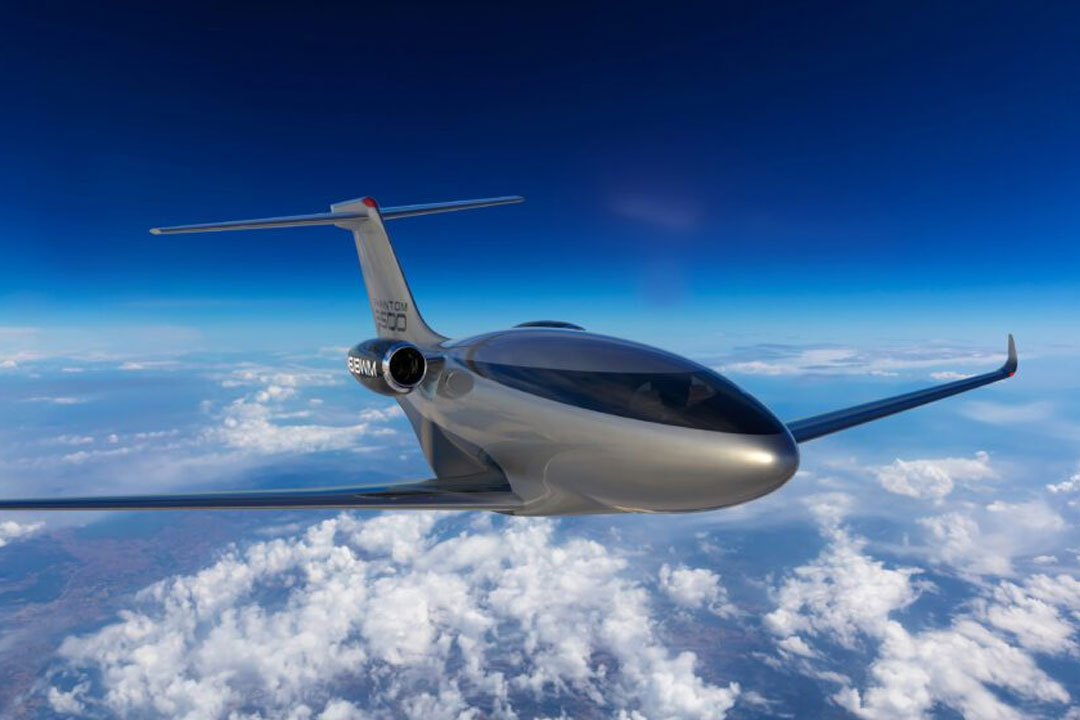
The digital displays inside the cabin will be 6 feet wide and provide a color-enhanced, panoramic view of what’s around the jet. | Photo: ottoaerospace.com
- Immersive views with wall sized, HDR capable displays that stitch feeds from nose, tail and belly cameras so each seat enjoys a horizon level perspective.
- Flexible zoning where surfaces switch from scenic to productivity to relaxation content, enabling a boardroom environment during climb and a calm, circadian friendly scene during cruise. The Maverick study highlights this adaptive approach to surfaces, lighting and control.
- Acoustic gains because a continuous pressure vessel with fewer penetrations is easier to insulate, which benefits perceived luxury on long sectors.
- Safety informed UX with redundant camera clusters, independent power buses and fallback content modes. Human factors work focuses on latency, motion parallax and color accuracy so the scene feels native rather than simulated.
How this plays out next
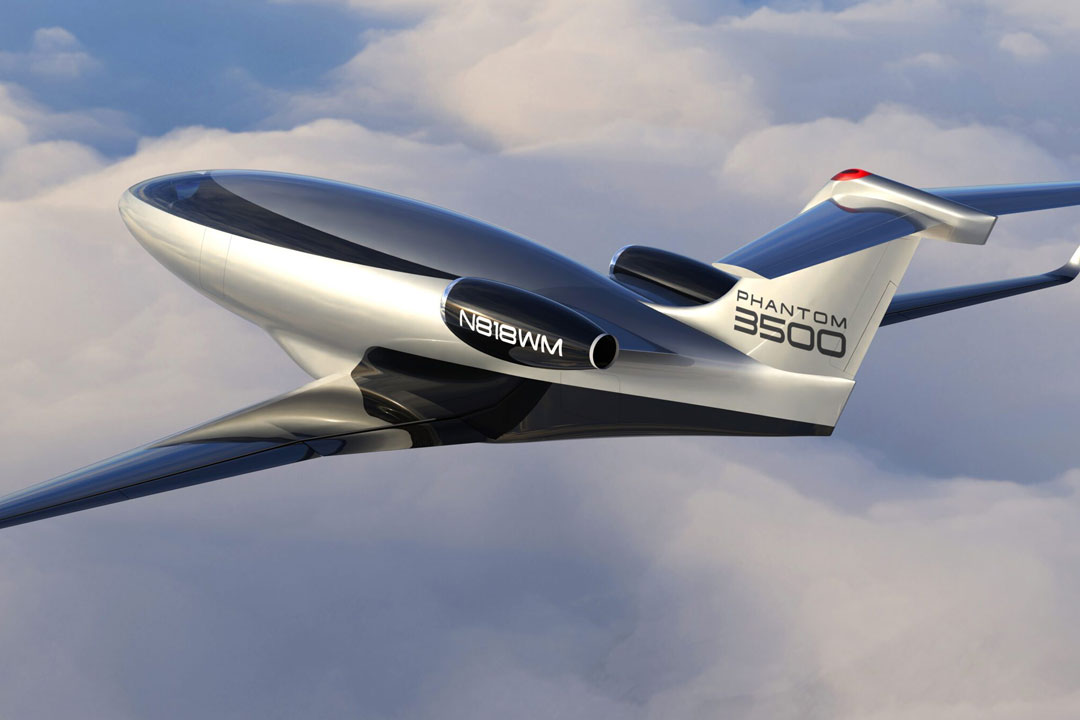
Flexjet placed an order for 300 Phantom 3500s | Photo: ottoaerospace.com
The most credible near term path is a new build business jet that integrates digital windows from day one, backed by a launch operator willing to train crews, nurture passenger comfort and gather data. Parallel design studies keep pushing UX and materials while maturing the supply base for large, curved, aviation grade displays.
